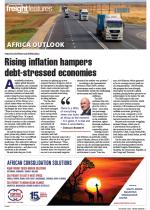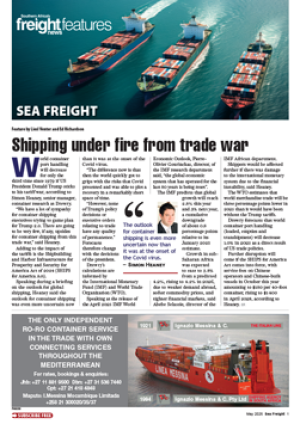Transport costs have been rising exponentially, and this has taken its toll on logistics on the continent.According to DSV’s Peter Verheyke, manager, senior, projects & overborder, air & sea, costs have gone up by at least 40% over the past two years due to a lack of vehicles and lots of work. “This, coupled with the bottlenecks on the routes and the long turnaround of the assets, has made the available f leet smaller,” he told Freight News. “In some cases, and particularly with Chinese companies, trucks, along with personnel and food, are all brought in, with little benefit to employment for local people. There may be a road built (which doesn’t last long before it is full of potholes) or a police station, but the truth is there is little longer-term benefit for the countries.”It is with this in mind that localisation legislation is on the increase. If managed and policed correctly this will see more local involvement in the project sector across countries.Verheyke said it was critical to fix infrastructure on the continent. “This includes harbours, roads, railways (making sure they are all the same gauge), and border administrations and processes. If goods cannot move through quicker, progress cannot be made. One of the problems obviously is the capital to fix existing infrastructure and build new infrastructure.”Just as important is placing facilities where they’re needed. “The harbour in Lobito, Angola has been fixed up, but it is something of a white elephant because it’s on the wrong side of the continent in terms of most buyers of copper and cobalt, who include China, India and others in Asia. They need to access ports on the east side of Africa – and the problem with both Mombasa and Dar es Salaam is that the harbours are difficult to expand, even if the capital was available. Beira, on the other hand, has problems with draught, which is not attracting the bigger shipping lines into that por t.”One of the core challenges in Africa involved deficiencies in built infrastructure, administrative functionality and corruption, Verheyke added.“Much of the built infrastructure has not been maintained or supplemented for some time, and so you have an output dilemma in that the existing infrastructure is not able to accommodate increased demand. So, for example, once the copper is mined, it can sit waiting to be moved to its export markets.”The roads are mostly single-track, and this is not conducive to efficient logistics, and much of the rail network is either now redundant or in poor condition.Vehicle shortages continue to add to the challenges, while ports are under pressure to meet demand.“Perhaps the most damaging of all problems is the time it takes to move goods up and out,” he said. “A roundtrip that used to take 22 days from South Africa to the Democratic Republic of the Congo (DRC) and back now takes around 48 days, with most of the time spent waiting, particularly at border posts. It is important to remember it is not the distances that present the challenge, but the administrative capability, the corruption and the poor infrastructure.”But, said Verheyke, despite the numerous challenges, Africa remained a continent of hope and opportunity.Countries such as Kenya and Rwanda were showcasing what could be achieved by improving infrastructure and making it easier to do business.“The global demand for copper and cobalt puts the Copperbelt in both Zambia and the DRC in the pound seats for exporting huge volumes. The world needs copper and cobalt for cell phones, televisions and semiconductors for motor vehicles. There’s also a need for other minerals in which Africa is rich, and if we could get the infrastructure and administrative systems sorted out, there is huge potential. My guess is that if you could get 48-day trips to 20-day trips, you could treble the output and input. The difference would be huge!”

